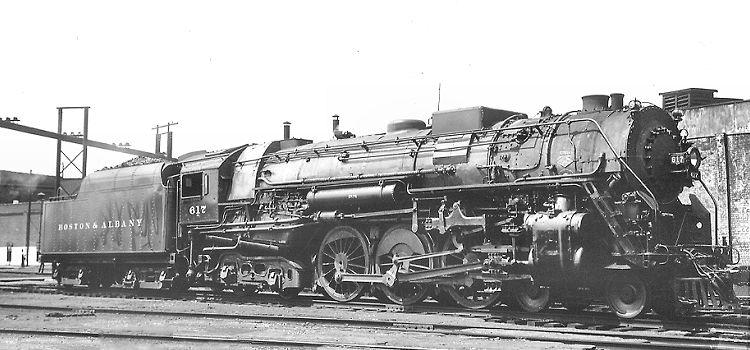In reply to Duke :
The bridge over the Onondaga Lake Parkway in Syracuse gets smashed on a near bi-monthly basis.


/https://www.thespec.com/content/dam/thespec/news/ontario/2010/09/12/dundas-couple-survive-fatal-megabus-crash/cbfe57e04982ac36d68e960caed8_Gallery.jpeg)
In reply to Duke :
The bridge over the Onondaga Lake Parkway in Syracuse gets smashed on a near bi-monthly basis.


/https://www.thespec.com/content/dam/thespec/news/ontario/2010/09/12/dundas-couple-survive-fatal-megabus-crash/cbfe57e04982ac36d68e960caed8_Gallery.jpeg)
East Broad Top Railroad had someone smash their 12'4" bridge with a boom truck this summer and shift the deck of the bridge over several inches. Even worse, the guy drove off so they had to have the police hunt down the culprit. I believe they ended up finding them by checking all the truck repair shops in the area and finding one with a damaged boom.




Here is a railfan's guide to Newark:

The 8'-7" bridge is the first one at left on the CSX line, which used to be B&O tracks. The 5 points grade crossing is at yellow #3 on that map. The little B&O depot building is still there but is only used as a service / storage building. The bigger 12'-0" bridge is at yellow #4. You'll note a thin grey line that runs roughly parallel to Chapel Street, shares the overpass with the street, and then crosses over toward the northwest. That is the abandoned Pomeroy & Newark line, which extended from the tracks that eventually became the Northeast Corridor, on the south side of town, about 25 miles north to Pomeroy, PA. A reasonable amount of this line has been converted to trails. The other half of that old line is still in service as Norfolk Southern tracks heading down to Delaware City. It originally extended farther south to the Delmarva Peninsula but that line is gone.
In reply to Duke :
I believe there were a couple injured in one, and at least one killed in another. And the one with fatalities was particularly sad because the driver was a local and said he was familiar with this area, so he should've known about that bridge, especially when it is constantly on the news.

Somebody made this gem a couple weeks back.
Here's a weird one. A locomotive, being transported by truck, struck the underside of a railroad bridge.

During the Indiana Transportation Museum's exodus, Chicago, Indianapolis & Louisville SW1 #50, the Monon's very first diesel, was being transported and was decapitated by a CSX bridge. The truck driver blamed the pilot vehicle for deviating from the planned route and then not noticing when their clearance pole snapped off on the bridge. People pointed out though that the truck driver should have known the height of his load and noticed that the bridge was marked shorter than that. SW1 cabs and control stands are fortunately the same as a lot of SW and NW switchers, but the cab and control stand on it were original to it from when EMD turned it out of the factory in '42.
An active CSX bridge in Little Falls, NY still lettered for New York Central Systems, 53 years after New York Central ceased to exist.

A New York Central H-10b Mikado darkens the sky at Berea, Ohio as it travels the CCC&StL, also known as "The Big Four."

The Hudsons and Mountains and Niagaras got all the glory on the NYC, but the H-class Mikes hauled their share of tonnage. And looked fearsome doing it.

H-10b #2380 on subsidiary Michigan Central. The slatted pilot is interesting, in that NYC preferred to use footboards on the front for crews to ride on, but when motive power was transferred to the Michigan Central, they usually had pilots installed. Also interesting is that the slats weren't constructed from cast-iron or boiler tube, but were in fact wood.

In reply to Pete Gossett (Forum Supporter) :
There used to be a really big bridge of that type (not sure what it's called structurally) along PA Route 1 a little west of Media. Always had LIONEL graffittied on it, and it was over a wide, deep river valley. It was way up there and far from the bank.
In reply to TurnerX19 :
The fac that you took this photo from an Austin-Healey 100 makes this even better. I love those old Austin-Healey roadsters. Although at 6'3", they just aren't meant for me.

The Boston & Albany was the odd man out on the New York Central. All their other subsidiaries, like Michigan Central or Cleveland, Cincinatti, Chicago & St. Louis, operated motive power that was indistinguishable to the NYC's except for tiny details, like the wooden pilots on Michigan Central power. But the Boston & Albany ran through mountainous territory, and so the engines that worked on NYC's other flat territory would not work on the B&A.




The J-2 Hudson is a good example. Looking highly similar to one of the NYC's famous J-1 and J-3 Hudsons, the J-2 had a few changes to make it more suitable for the B&A's short grades. The drive wheels were 4" shorter, at 75", to give them more tractive effort and better acceleration. They were fitted with a large squared-off rectangular sand dome with a higher capacity. And the standard 6-axle tenders were ditched for a stubby 4-axle tender (although #616 seems to have been switched back to a standard tender). The B&A had shorter hauls, so they didn't need a long-range tender, and the added water and coal would eat into the engine's pulling power as well. When the NYC dieselized the B&A first, the J-2s were sent west to run in commuter service, where their shorter drivers and lightweight tenders made them excellent sprinters.
Boston & Albany J-2a #600 with a silvered smoke box. The B&A painted the boiler jackets dark green with silvered smokeboxes for a special event. Which engines were painted in this manner and how long they were left in that paint scheme has been lost to time.

You'll need to log in to post.